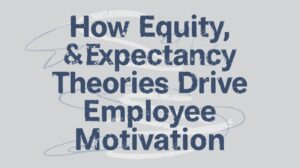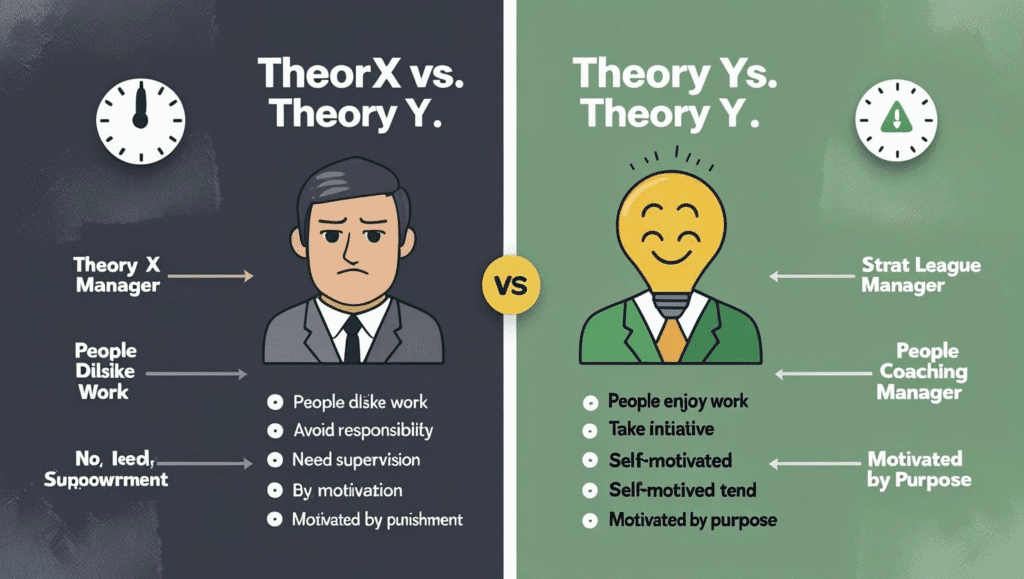How Equity and Expectancy Theories Drive Employee Motivation
For leaders and managers, understanding the psychological drivers of employee motivation is the holy grail of effective management. While countless strategies exist, two of the most powerful and enduring psychological frameworks are Equity Theory and Expectancy Theory. These theories provide a lens through which we can understand why an employee might be highly motivated, deeply disengaged, or on the verge of quitting. They explain motivation not as a simple switch to be flipped, but as a complex calculation based on fairness, personal belief, and desired outcomes.
Part 1: Equity Theory – The Drive for Fairness
Developed by workplace psychologist J. Stacy Adams in 1963, Equity Theory is rooted in the simple but powerful human need for fairness. It posits that employees are motivated when they perceive a fair balance between what they put into their job (Inputs) and what they get out of it (Outcomes), especially when compared to their peers.
— J. Stacy AdamsThis isn’t about objective equality; it’s about subjective perception. An employee constantly, and often subconsciously, performs this mental calculation. The result of this comparison determines their state of mind and subsequent actions.
The Core Components of the Equity Equation
Inputs
These are the contributions an employee believes they make to the organization. Inputs are diverse and can include:
- Effort & Hard Work: Hours worked, intensity of focus.
- Skill & Experience: Education, qualifications, years of service.
- Loyalty & Commitment: Dedication to the company’s mission.
- Flexibility: Willingness to take on extra tasks or work odd hours.
Outcomes
These are the rewards an employee perceives they receive from the organization in exchange for their inputs. Outcomes include:
- Financial Rewards: Salary, bonuses, stock options.
- Recognition & Praise: Acknowledgment from managers and peers.
- Advancement: Promotions, new opportunities.
- Job Security & Benefits: A sense of stability, health insurance.
The Impact of Perceived Inequity on Motivation
When the scales are perceived as unbalanced, it creates cognitive dissonance, a state of tension that the employee is motivated to resolve. This can manifest in several ways:
- Equity (Fair Balance): The employee perceives their ratio as fair compared to others. This leads to job satisfaction and continued motivation.
- Under-Rewarded Inequity: The employee feels their ratio of outcomes to inputs is worse than their peers’. This is the most damaging state and can lead to them:
- Reducing their inputs (e.g., “I’m not working late anymore”).
- Attempting to increase their outcomes (e.g., asking for a raise, or in extreme cases, theft).
- Distorting their perception of their own or others’ inputs/outcomes.
- Leaving the organization (turnover).
- Over-Rewarded Inequity: The employee believes their ratio is better than their peers’. While less common, this can lead to feelings of guilt and motivate them to increase their inputs (work harder), or they might rationalize the imbalance (“I must be better than them”).
Part 2: Expectancy Theory – The Individual’s Calculation for Success
Developed by Victor Vroom in 1964, Expectancy Theory provides a different, more individualized perspective. It suggests that an individual’s motivation to act is a function of their conscious belief that their effort will lead to a desired outcome. It’s a forward-looking theory based on an internal cognitive process.
— Victor VroomThe theory is often summarized as VIE Theory, based on its three critical components: Valence, Instrumentality, and Expectancy. Motivation is seen as the product of these three factors. If any one of them is zero, the overall motivation will be zero.
The Three Links in the Motivational Chain (VIE)
Expectancy (Effort → Performance)
This is the employee’s belief in their own ability to achieve a certain performance level if they exert a certain amount of effort. It answers the question: “If I try hard, will I actually succeed at this task?”
Low Expectancy: If an employee lacks the skills, resources, or self-confidence, they won’t believe their effort will matter, and motivation will collapse.
Instrumentality (Performance → Outcome)
This is the employee’s belief that achieving the performance level will lead to a specific outcome or reward. It answers the question: “If I succeed, will I actually be rewarded for it?”
Low Instrumentality: If an employee sees that promotions are based on seniority, not merit, or that promises of bonuses are often broken, they won’t trust that their performance will be rewarded.
Valence (Outcome → Value)
This is the significance or value that an employee places on the expected outcome. It answers the question: “Do I even want this reward?”
Low Valence: A bonus might have high valence for one employee, while extra vacation time might have high valence for another. If the offered reward is not valued by the individual, it will not motivate them.
The Manager’s Playbook: Applying Both Theories
The true power for a manager comes not from choosing one theory over the other, but from understanding how they work in tandem. Equity Theory addresses the employee’s need for a fair environment, while Expectancy Theory addresses their internal belief system. A holistic motivational strategy must target both.
Actionable Strategies for Leaders
- To Address Equity Theory (Build a Fair Environment):
- Ensure Transparency: Be as clear as possible about how pay, promotions, and recognition are decided. Opaque processes breed suspicion of inequity.
- Standardize Inputs: Use clear job descriptions so employees understand what inputs are expected for their role.
- Conduct Equity Audits: Periodically review salary and promotion data to identify and correct systemic biases based on gender, race, or other factors.
- Provide Context for Decisions: When one person is promoted, explain the skills and accomplishments (inputs) that led to the decision.
- To Address Expectancy Theory (Empower Individual Belief):
- Boost Expectancy: Provide proper training, set clear and achievable goals, give regular feedback, and express confidence in your team’s abilities.
- Strengthen Instrumentality: Create a clear and reliable link between performance and rewards. If you promise a bonus for a certain achievement, deliver it without fail. Celebrate and reward high-performers publicly.
- Personalize Valence: Get to know your employees. Understand what they truly value. Offer a range of rewards, such as flexible work hours, professional development opportunities, or public recognition, not just monetary incentives.
Conclusion: A Two-Sided Coin of Motivation
Equity Theory and Expectancy Theory are not competing frameworks; they are two sides of the same motivational coin. An employee can have all the self-belief in the world (high Expectancy), but if they see a less-qualified peer being rewarded more (high Inequity), their motivation will crumble. Conversely, an environment can be perfectly fair, but if an employee doesn’t believe they have the skills to succeed or doesn’t value the rewards on offer, they will remain inert.
Effective leaders must first build a foundation of fairness and transparency (Equity). Upon that foundation, they can then build individual motivation by empowering employees, clearing pathways to success, and offering rewards that truly matter (Expectancy).
Frequently Asked Questions
Neither is more important; they are equally critical because they explain different facets of motivation. Equity Theory is foundational—if employees perceive unfairness, no amount of individual incentive (from Expectancy Theory) will work effectively. You must first ensure the playing field is seen as level. Then, you can use the principles of Expectancy Theory to motivate individuals on that field.
The most effective way is also the simplest: ask them. During regular one-on-one meetings, discuss their career goals and aspirations. Ask questions like, “What would a successful year look like for you?” or “When you think about rewards for great work, what comes to mind?” Some employees value public praise, others prefer a cash bonus, and some might value an extra day off or the opportunity to lead a project. Direct conversation is the best tool.
Regarding Equity Theory, the biggest mistake is a lack of transparency. Managers often assume that if they are being fair, employees will know it. But perception is reality. Secrecy around pay and promotions creates a vacuum that employees will fill with suspicion and assumptions of unfairness. For Expectancy Theory, the biggest mistake is assuming a one-size-fits-all reward system. Offering a single type of reward (e.g., a standard bonus) ignores the diverse values (Valence) of team members, drastically reducing the motivational impact of the reward.


